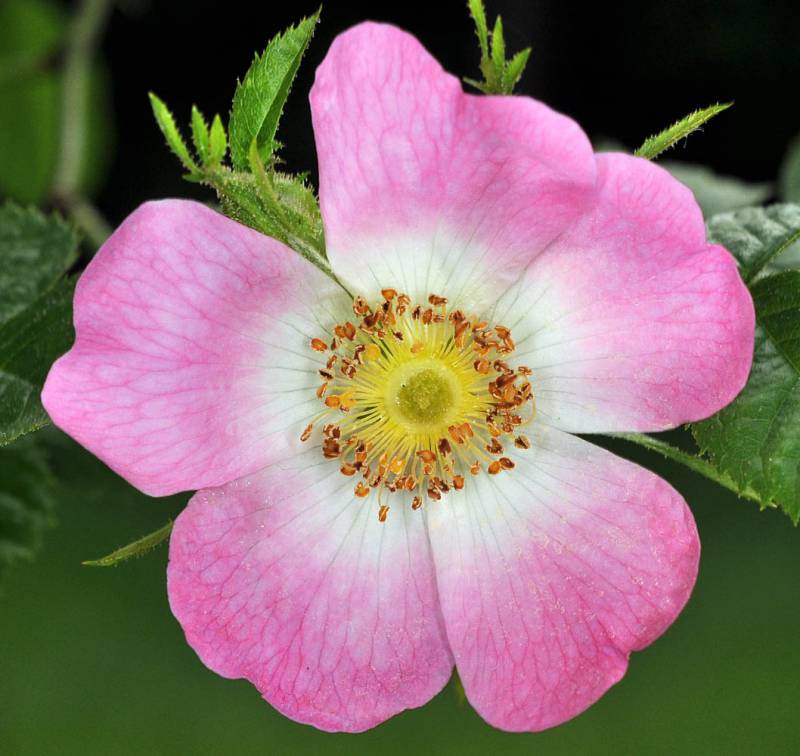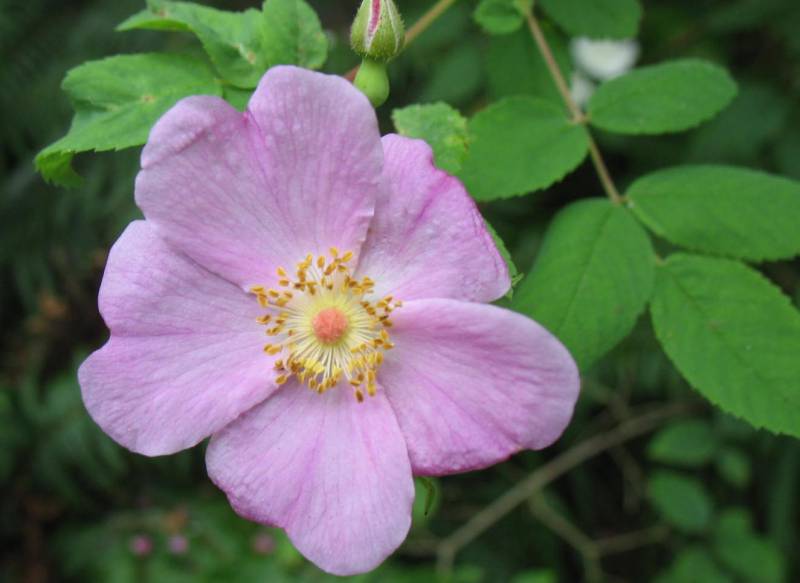Rosa rubiginosa
Rosa pisocarpa
sweetbrier rose, small-flowered sweetbrier
clustered rose, peafruit rose
Leaves alternate, deciduous, odd-pinnate with 5-7 firm leaflets;
leaflets broadly elliptic to sub-orbicular, 1-2.5 cm. long, doubly serrate with gland-tipped teeth, the lower surface with stalked glands and hairs.
Leaves alternate, pinnate, puberulent on the lower surface, not glandular;
leaflets 5-9, elliptic to ovate, 1.5-4 cm. long and 0.7-2 cm. wide, finely serrate.
Flowers in small clusters or solitary, on short, stout, glandular-bristly pedicels;
sepals 5,1-2 cm. long, with stalked glands and some slender lateral lobes, spreading, deciduous at maturity;
petals 5, 1.5-2 cm. long, bright pink;
stamens numerous;
pistils many, the styles densely short-hairy.
Flowers small, in flat-topped cymes terminating the branches of the season, seldom solitary;
calyx lobes 5, 1-1.5 cm. long and 2.5-3.5 mm. wide at the base, constricted in the middle, with coarse, stalked glands on the back; the calyx tube glabrous and bluish-glaucous, 3-5 mm. thick;
petals 5, 1.2-2 cm. long, pink;
stamens and pistils numerous.
Hips sub-globose or ovoid, 1-1.5 cm. long, glabrous, bright red.
Hips purplish, globose or ellipsoid, 6-12 mm. long and thick, the achenes numerous, 3 mm. long, stiffly long-hairy along one side.
Rosa rubiginosa
Rosa pisocarpa
- Local floras:
CA,
OR,
WA
- Local Web sites:
CalFlora,
CalPhotos,
Flora NW,
PNW Herbaria
WildflowerSearch
iNaturalist (observations)
USDA Plants Database
- LBJ Wildflower Center
- SEINet
- Plants of the World Online
- Encyclopedia of Life
- Wikipedia
- Google Image Search
- Local floras:
BC,
CA,
OR,
WA
- Local Web sites:
CalFlora,
CalPhotos,
Flora NW,
PNW Herbaria,
Turner Photog.
WildflowerSearch
iNaturalist (observations)
USDA Plants Database
- LBJ Wildflower Center
- SEINet
- Plants of the World Online
- Encyclopedia of Life
- Wikipedia
- Google Image Search



